"Best Food & Wine Tours" Under The Tuscan Sun: Our Romantic Culinary Escape
Things to do in Tuscany Embark on a budget-friendly journey through Tuscany's gastronomic wonders. This 7-day culinary adventure takes you from the art-filled streets of Florence to the rolling hills of Chianti, the medieval charm of Siena, and the picturesque landscapes of Val d'Orcia. Discover how Expedia can help you find cheap flights to Tuscany and affordable accommodations, allowing you to indulge in unforgettable dining experiences. Explore the famous town of Cortona, savor authentic Tuscan cuisine, and unwind on the beautiful Tuscan coast. From cooking classes and wine tastings to visits to local markets and Michelin-starred restaurants, this itinerary offers a perfect blend of culture and gastronomy. Experience the romance of Tuscany while staying in charming hotels and inns. This blog proves that cheap travel to Tuscany doesn't mean compromising on quality, offering tips for a budget-friendly yet luxurious Italian getaway. Keywords: cheap travel to Tuscany, budget-friendly travel to Tuscany, cheap flights to Tuscany, Expedia, culinary adventure, romantic getaway, Florence, Siena, Chianti, Val d'Orcia, Cortona, Tuscan coast.
TRAVEL
Peter
7/27/202429 min read
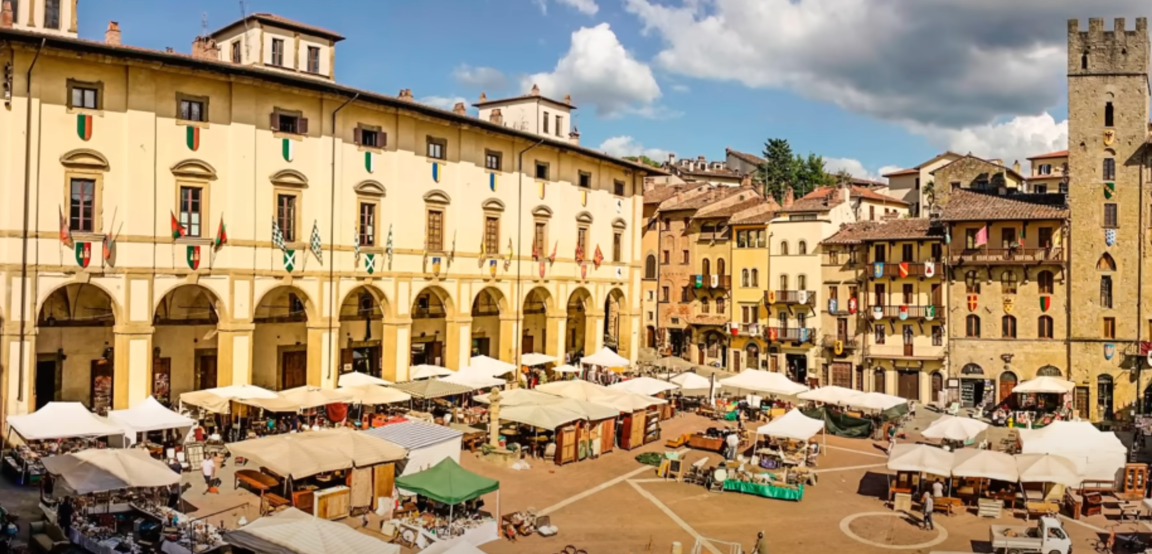

Under The Tuscan Sun: Our Romantic Culinary Escape
Day 1: From Copenhagen to Florence - A Taste of Tuscany
As my wife and I boarded our flight from Copenhagen to Florence, excitement bubbled within us. We'd spent months planning this culinary adventure through Tuscany, and now it was finally happening. Thanks to Expedia, we'd managed to snag some great deals on our flights and accommodations, making our dream of cheap travel to Tuscany a reality.
After a smooth flight, we touched down in Florence in the late afternoon. The warm Tuscan sun greeted us as we stepped out of the airport, a welcome change from Copenhagen's cooler climate. We picked up our rental car - another budget-friendly option we'd booked through Expedia - and made our way to our first stop: a charming boutique hotel in the heart of Florence.
As we settled into our room, the aroma of fresh bread and herbs wafted through the open window. Unable to resist, we decided to forgo unpacking and instead ventured out for our first taste of Tuscan cuisine.
We found ourselves at a small trattoria tucked away in a narrow cobblestone street. The owner, a jovial man named Giovanni, welcomed us warmly and insisted we try his homemade pappardelle with wild boar ragù. As we savored each bite of the rich, hearty pasta, we knew our culinary journey had begun in earnest.
Welcome to Scandi Home Heaven! We believe in transparency and want to disclose that some of the links on our site are affiliate links. This means that at no additional cost to you, we may earn a commission if you click through and make a purchase. We only recommend products and services we have personally used and believe will add value to our readers.
Your support helps us continue to provide high-quality content. Thank you!
Day 2: Florence - Art, History, and Gastronomic Delights
We awoke to the gentle chiming of church bells, eager to dive into Florence's rich tapestry of art, history, and cuisine. After a quick breakfast of cornetti and cappuccini at a nearby café, we set out for the Uffizi Gallery, having booked our tickets in advance through Expedia to avoid the long queues.
The Uffizi was a feast for the eyes. We marveled at Botticelli's "Birth of Venus" and da Vinci's "Annunciation," feeling transported through time. The play of light and shadow in Caravaggio's works left us in awe. As we wandered through the corridors, I couldn't help but draw parallels between the artistry on the walls and the culinary artistry we were about to experience.
By midmorning, our cultural appetite sated, our stomachs began to growl. We made our way to the Mercato Centrale, Florence's bustling food market. The market was a sensory overload in the best possible way. Vibrant displays of sun-ripened tomatoes, fragrant basil, and plump olives greeted us at every turn. We sampled aged Parmigiano-Reggiano, its complex flavor crystals dancing on our tongues, and paper-thin slices of prosciutto that melted in our mouths.
For lunch, we couldn't resist trying lampredotto, a traditional Florentine street food. At a small stand run by a charismatic vendor named Marco, we watched as he skillfully prepared the dish. Made from the fourth stomach of a cow, the meat was slow-cooked with herbs and vegetables until tender. Served on a crusty roll and topped with salsa verde, it was a revelation - rich, flavorful, and utterly satisfying. We paired it with glasses of local Chianti, the wine's acidity perfectly cutting through the richness of the sandwich.
In the afternoon, we crossed the iconic Ponte Vecchio, pausing to admire the glittering jewelry shops that line the medieval bridge. Our destination was the Oltrarno district, known for its artisan workshops and local flavor. Here, we discovered a hidden gem: a tiny gelato shop called Gelateria della Passera. The owner, Sofia, proudly told us about her organic, locally-sourced ingredients as we sampled her creations. The pistachio gelato was intensely nutty, made with pistachios from Bronte in Sicily, while the lemon sorbet burst with the freshness of Amalfi coast lemons. We savored our cones as we strolled through the quiet streets, peeking into workshops where artisans crafted everything from mosaics to leather goods.
As evening approached, we returned to our hotel to freshen up for the culinary highlight of our day: dinner at the three-Michelin-starred Enoteca Pinchiorri. Housed in a Renaissance palazzo, the restaurant exuded elegance. We opted for the tasting menu, eager to experience Chef Annie Féolde's modern interpretation of Tuscan cuisine.
What followed was a three-hour gastronomic journey. Each course was a work of art, both visually and in flavor. We started with an amuse-bouche of liquid olive sphere with sun-dried tomato powder, an homage to Tuscan ingredients presented in a modernist style. The pasta course was unforgettable: delicate tortelli filled with Chianina beef cheek, served with a reduction of Vin Santo and shaved white truffles. The main course of sea bass with fennel and orange was a standout, the fish cooked to perfection and complemented beautifully by a crisp Vermentino from the Tuscan coast.
The sommelier guided us through wine pairings that enhanced each course, from a bubbly Franciacorta with our appetizers to a robust Brunello di Montalcino with our main course. We finished with a playful dessert of deconstructed tiramisu, featuring coffee granite, mascarpone foam, and chocolate "soil."
As we walked back to our hotel under the starry Florentine sky, hand in hand, we felt incredibly fortunate. Thanks to the budget-friendly options we'd found through Expedia for our flights and accommodation, we'd been able to splurge on this unforgettable meal. From street food to Michelin stars, we'd experienced the full spectrum of Florence's culinary scene in just one day.
Falling into bed, happily exhausted and still savoring the lingering tastes of our dinner, we drifted off to sleep, excited for what the rest of our Tuscan adventure would bring.
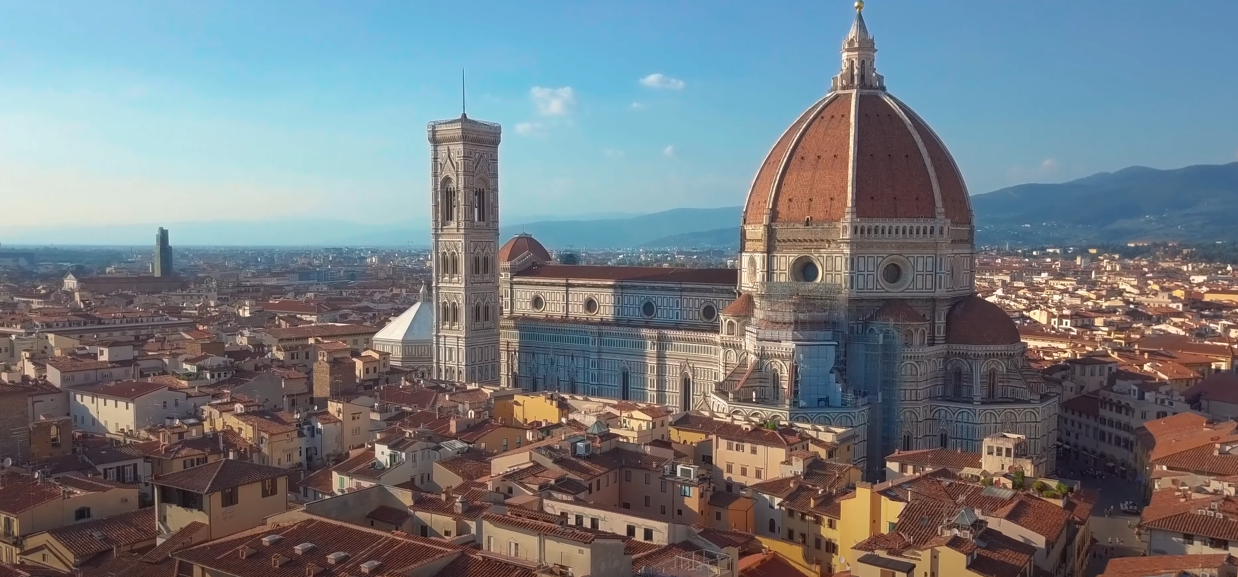

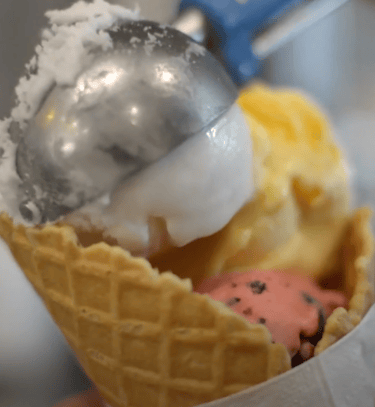


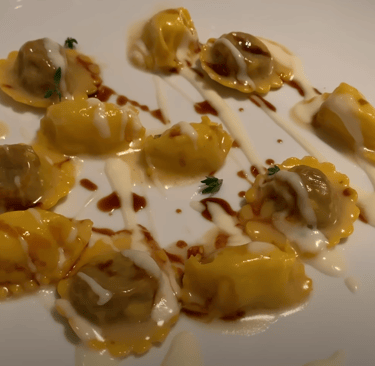
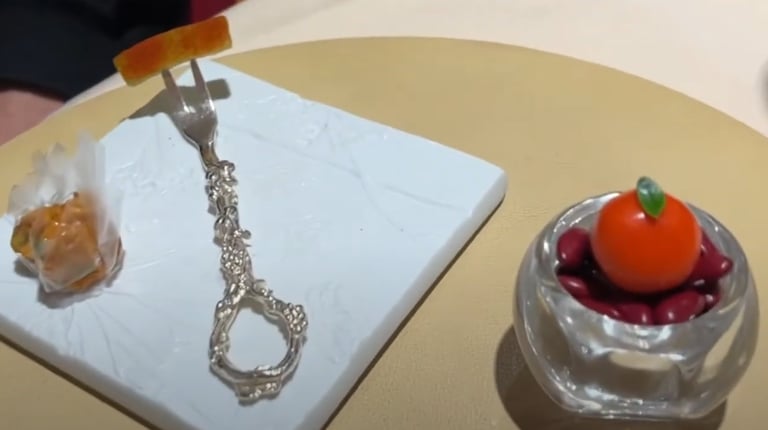


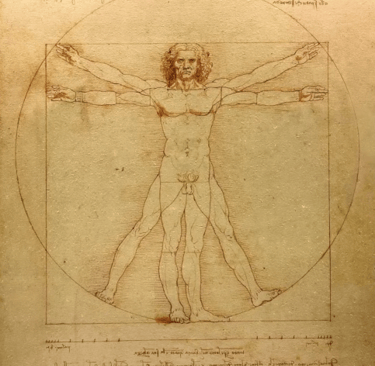
Day 3: Chianti Region - Wine, Views, and Rustic Cuisine
We rose with the Tuscan sun, enjoying a quick breakfast of fresh figs, local honey, and crusty bread on our hotel's terrace. The promise of Chianti's rolling hills and world-famous wines beckoned. Thanks to Expedia, we'd secured a great deal on our rental car, making this day trip a budget-friendly part of our Tuscan adventure.
As we left Florence behind, the landscape transformed. Cypress-lined roads wound through a patchwork of vineyards and olive groves, each turn revealing a view more breathtaking than the last. The morning mist was just lifting, giving the hills an ethereal quality that had us stopping frequently for photos.
Our first destination was the charming town of Greve in Chianti. We arrived just as the town was waking up, locals exchanging buongiornos as they went about their morning routines. The heart of Greve is its unique triangular piazza, surrounded by arcaded buildings housing cafes, wine shops, and artisan boutiques.
We made our way to the famous Antica Macelleria Falorni, a butcher shop that's been operating since 1729. The aroma of cured meats hit us as we entered, and we were greeted by Stefano, a fifth-generation butcher. He guided us through a tasting of their specialties: fennel-infused finocchiona, wild boar salami, and the prized Cinta Senese ham made from an ancient breed of Tuscan pig. Each slice was a revelation of flavor, telling the story of Chianti's gastronomic heritage.
Inspired by our tasting, we assembled a picnic basket. To our cured meats, we added some local pecorino cheese, grilled vegetables, and a loaf of unsalted Tuscan bread. Stefano recommended a bottle of Chianti Classico from a small local producer to complete our feast.
With our picnic secured, we drove to Castello di Verrazzano, a historic winery perched on a hilltop. The castello has been producing wine since the 7th century and was once home to the famous explorer Giovanni da Verrazzano. We joined a small group tour, learning about the estate's history and wine-making process as we wandered through the ancient cellars.
The highlight was the tasting that followed. Our sommelier, Francesca, guided us through a selection of their wines. We started with a crisp Vermentino, its citrusy notes a perfect palate opener. Next came their Chianti Classico, a ruby-red wine with notes of cherries and violets. The star of the show was their Riserva - aged for 24 months in oak barrels, it had a complexity that left us in awe.
As the tasting concluded, Francesca invited us to enjoy our picnic on the castle's terrace. We couldn't have asked for a more perfect setting. As we savored our spread of Tuscan delicacies, paired with our newly purchased Chianti Classico, we gazed out over the sun-drenched vineyards. The interplay of flavors - the saltiness of the prosciutto, the sharpness of the pecorino, the fruitiness of the wine - was nothing short of magical.
In the late afternoon, pleasantly full and slightly wine-flushed, we made our way to our accommodation for the night - a romantic countryside inn we'd discovered through Expedia. The Villa Le Barone was a 16th-century manor house turned boutique hotel, offering panoramic views of the Chianti hills. Our room, with its terracotta floors and antique furnishings, felt like stepping back in time.
We had a few hours to relax before dinner, so we took advantage of the villa's beautiful gardens. We strolled hand in hand through rows of lavender and rosemary, the herbs releasing their fragrance in the warm evening air. At the garden's edge, we found a quiet spot to watch the sunset, the fading light painting the vineyards in hues of gold and pink.
For dinner, we joined a cooking class at the inn's restaurant. Chef Maria, a jovial woman with a passion for traditional Tuscan cuisine, welcomed us into her kitchen. Under her expert guidance, we learned to make pici pasta from scratch. This thick, hand-rolled spaghetti is a Tuscan specialty, and kneading and rolling the dough gave us a new appreciation for the art of pasta-making.
As our pici dried, Maria taught us to prepare a simple but delicious sauce of fresh tomatoes, basil, and garlic. The key, she insisted, was using the best quality ingredients - tomatoes ripened under the Tuscan sun, basil from the garden, and local olive oil.
Finally, it was time to bring our creation together. We cooked the pici until it was perfectly al dente, then tossed it with our sauce. The result was a dish that embodied the essence of Tuscan cooking - simple, rustic, and utterly delicious. We enjoyed our handmade dinner on the terrace, accompanied by a bottle of the villa's own Chianti and the sound of cicadas in the distance.
As we retired to our room, the flavors of the day still lingering, we felt a deep connection to this beautiful region. From the historic vineyards to the hands-on cooking experience, we'd immersed ourselves in the culinary traditions of Chianti. And thanks to the budget-friendly options we'd found for our cheap travel to Tuscany, we were able to indulge in these unforgettable experiences.
We fell asleep to the gentle rustling of cypress trees, dreaming of sun-soaked vineyards and the adventures still to come in our Tuscan journey.

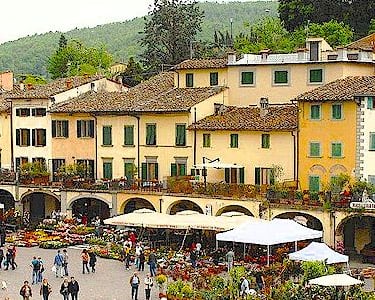
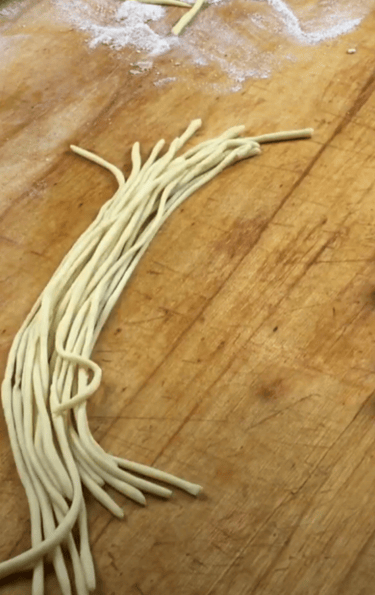

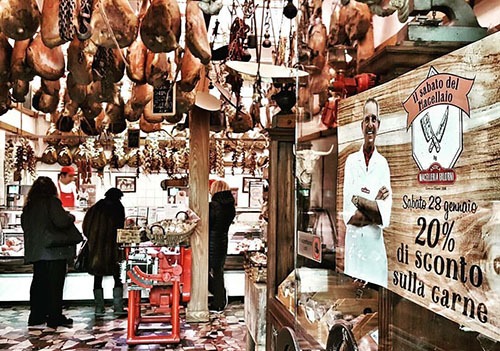

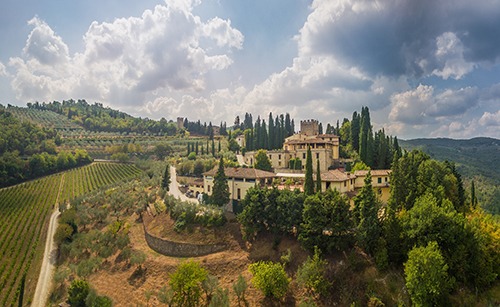

Handmade Pici
Castello di Verrazzano
Antica Macelleria Falorni
Day 4: Siena - Medieval Charm and Culinary Traditions
We woke early, savoring our last moments at the charming Villa Le Barone. After a breakfast of homemade pastries, local cheese, and fruit from the villa's orchards, we bid farewell to our hosts and set off for Siena. The drive was short but spectacular, winding through the heart of the Chianti region, with each turn revealing new vistas of vine-covered hills and ancient stone farmhouses.
As we approached Siena, the city's medieval skyline came into view, dominated by the striped tower of the Palazzo Pubblico and the distinctive dome of the cathedral. We'd used Expedia to find a small, family-run hotel just outside the city walls, allowing us to park easily and walk into the historic center - a budget-friendly choice that added to the authenticity of our experience.
Our first stop was the magnificent Duomo. The cathedral's striking facade of black and white marble was even more impressive in person than in photos. Inside, we marveled at the intricate mosaic floor, each panel telling a different story from mythology or the Bible. The library, with its vibrant frescoes by Pinturicchio, was a highlight - the colors as vivid as if they'd been painted yesterday rather than five centuries ago.
From the Duomo, we made our way through narrow, winding streets to the heart of Siena: the Piazza del Campo. This shell-shaped piazza, famous for hosting the Palio horse race twice each summer, was bustling with life. We took a moment to appreciate the architectural harmony of the square, dominated by the soaring Torre del Mangia and the elegant Palazzo Pubblico.
By now, our stomachs were growling, and we found the perfect spot for lunch: a small osteria tucked away in a side street off the Campo. The owner, Giancarlo, greeted us like old friends and insisted we try his homemade pici cacio e pepe. We watched in fascination as he prepared the dish, tossing the thick, hand-rolled pasta with pecorino cheese and freshly ground black pepper, adding a splash of pasta water to create a creamy sauce. The result was a masterpiece of simplicity - the al dente pici perfectly coated in the sharp, peppery sauce. We paired it with a crisp Vernaccia di San Gimignano, its citrusy notes balancing the richness of the cheese.
-------------------------------------------------
Recipe for pici cacio e pepe:
Note: While Cacio e Pepe is typically associated with Rome, it's equally delicious when made with Tuscan pici pasta. This recipe incorporates traditional Tuscan flavors and techniques.
Ingredients:
500g durum wheat flour
About 300ml water
Generous amount of black peppercorns
200g Pecorino Romano cheese, freshly grated
Salt
Instructions:
Make the pici pasta:
Place the flour on a clean, dry surface. Make a well in the center and gradually add water, mixing with a fork.
Once the dough forms, knead it for about 10 minutes until smooth and elastic. Wrap in plastic and let it rest for at least 30 minutes.
Divide the dough into smaller pieces. Roll each piece into a long, thin rope. Using your palms, roll the rope back and forth on a clean surface to create the characteristic pici shape.
Prepare the sauce:
Bring a large pot of salted water to a boil.
In a dry skillet, toast the black peppercorns over medium heat until fragrant. Grind them coarsely.
In a large bowl, combine the freshly grated Pecorino Romano with a good amount of the ground black pepper.
Cook the pasta:
Cook the pici pasta in the boiling salted water until al dente. Reserve about a cup of pasta water.
Drain the pasta, reserving some of the starchy pasta water.
Create the sauce:
Add the drained pici to the bowl with the Pecorino Romano and black pepper.
Gradually add the reserved pasta water, a little at a time, tossing constantly to create a creamy sauce. The starch in the pasta water will help emulsify the sauce.
Continue adding pasta water until you reach the desired consistency.
Serve:
Divide the pasta among serving bowls.
Garnish with additional freshly grated Pecorino Romano and a grind of black pepper.
Serve immediately.
Tips:
Use high-quality Pecorino Romano for the best flavor.
For a richer flavor, consider toasting the Pecorino Romano in a dry skillet before grating.
Adjust the amount of black pepper to your taste preference.
For a more rustic touch, serve the pici cacio e pepe with a drizzle of extra virgin olive oil.
Enjoy this classic Tuscan dish!
-------------------------------------------------
After lunch, we visited the Civic Museum in the Palazzo Pubblico. The frescoes in the Sala della Pace were breathtaking, particularly Ambrogio Lorenzetti's Allegory of Good and Bad Government - a stark reminder of the importance of civic virtue that felt as relevant today as it did in the 14th century.
As the afternoon coolness set in, we joined a food tour that promised to reveal Siena's hidden culinary gems. Our guide, Francesca, was a font of knowledge about Sienese cuisine and its history. We started at a traditional bakery where we sampled panforte, a dense, spicy fruit and nut cake that's a Sienese Christmas specialty. The intense flavors of candied fruit, nuts, and spices were a delightful surprise.
Next, we visited a small pasticceria famous for its ricciarelli - soft almond cookies covered in powdered sugar. The owner demonstrated how to shape the cookies, a technique passed down through generations. The ricciarelli melted in our mouths, their delicate almond flavor complemented perfectly by a glass of Vin Santo, Tuscany's famous dessert wine.
Our tour continued with stops at a local enoteca, where we tasted different varieties of Pecorino di Pienza paired with local honey and jams, and a historic caffè where we sampled traditional Sienese sweets like cavallucci (chewy spice cookies) and copate (nougat-like confections with honey and almonds).
The tour concluded at a salumeria, where we tasted an array of cured meats, including Siena's famous finocchiona, a fennel-scented salami. Francesca explained how each product reflected the terroir of the Sienese hills, from the herbs the pigs foraged to the unique aging processes.
For dinner, we followed Francesca's recommendation to a family-run trattoria off the tourist path. The place was packed with locals - always a good sign. We started with a plate of panzanella, a refreshing salad of tomatoes, onions, and bread soaked in olive oil and vinegar. For our main course, we couldn't resist trying the bistecca alla Fiorentina - a massive T-bone steak, grilled rare over oak coals and seasoned simply with olive oil, salt, and pepper. The meat was incredibly flavorful, its richness balanced by a side of bitter greens and a bold Brunello di Montalcino.
As we walked back to our hotel, the medieval streets of Siena were quiet, lit by warm lamplight that emphasized the city's timeless beauty. We paused in the Piazza del Campo, now nearly empty, to admire the starry sky above and reflect on our day.
Siena had revealed itself as not just a city of extraordinary history and art, but a place where culinary traditions were preserved with pride and passion. From the simple perfection of pici cacio e pepe to the complex flavors of panforte, each taste had told a story of Siena's past and present.
As we drifted off to sleep, the flavors of the day still lingering, we felt grateful for the authentic experiences we'd enjoyed. Our decision to seek out budget-friendly travel to Tuscany through Expedia had allowed us to immerse ourselves fully in the local culture, savoring every moment - and every bite - of our Sienese adventure. We fell asleep excited for what the next day in Tuscany would bring, our dreams filled with medieval towers, rolling hills, and the rich tastes of Sienese cuisine.

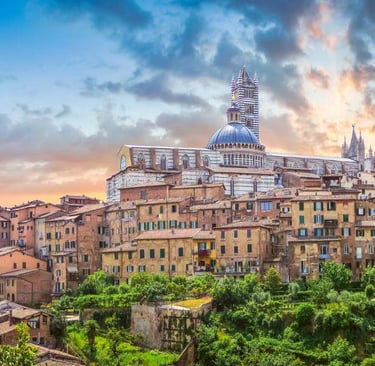
Day 5: Val d'Orcia - Picturesque Landscapes and Pecorino
We rose early, eager to explore the UNESCO World Heritage site of Val d'Orcia. After a quick breakfast at our Siena hotel, we set off in our rental car, once again appreciating the great deal we'd found through Expedia. As we drove south, the landscape transformed dramatically. Gone were the dense forests of Chianti, replaced by rolling hills dotted with cypress trees and punctuated by medieval hilltop towns. It was as if we'd driven straight into a Renaissance painting.
Our first stop was the charming town of Pienza, known as the "ideal city of the Renaissance" and famous for its pecorino cheese. We arrived just as the morning mist was lifting, revealing the town perched dramatically on a hilltop. The main square, Piazza Pio II, was a masterpiece of 15th-century urban planning, with the cathedral and Palazzo Piccolomini forming a harmonious ensemble.
We made our way to a local cheese maker, Caseificio Silvana, where we were greeted by the owner, Giorgio. He led us through the aging rooms, where rounds of pecorino in various stages of maturation lined the shelves. The pungent aroma was intoxicating. Giorgio explained the process of making pecorino, from the grazing of the sheep in the surrounding pastures to the careful aging of the cheese.
Then came the tasting. We sampled pecorino at different stages of aging, from the mild, creamy fresco to the sharp, crumbly stagionato. The complex flavors were a revelation - grassy notes from the pastures, hints of herbs the sheep had grazed on, and a richness that spoke of the fertile Val d'Orcia soil. We particularly loved the pecorino aged in walnut leaves, which imparted a subtle nuttiness to the cheese. To complement the cheeses, Giorgio offered us local honey and a selection of jams. The combination of the salty, aged pecorino with sweet chestnut honey was sublime.
Inspired by our tasting, we purchased some cheese and other local products for a picnic lunch later. We also couldn't resist buying a wedge of the walnut leaf-aged pecorino to take home as a tasty souvenir.
From Pienza, we drove to the thermal town of Bagno Vignoni, marveling at the quintessential Tuscan landscape along the way. Rows of cypress trees lined the roads, their slender forms stretching towards the azure sky. Fields of golden wheat swayed in the breeze, interspersed with vibrant patches of red poppies. We stopped several times to take photos, each vista more beautiful than the last.
Bagno Vignoni (Picture above) was unlike any town we'd ever seen. Instead of a main square, the heart of the village was a large, steaming pool of thermal water. This unique "piazza" has been in use since Roman times, though bathing is no longer allowed in the main pool. We learned that the thermal waters were believed to have healing properties, attracting pilgrims and nobles throughout history.
We found a charming restaurant overlooking the steaming pool for lunch. The terrace offered breathtaking views of the surrounding Val d'Orcia landscape. We started with a plate of local cured meats - prosciutto, salami, and capocollo - accompanied by the cheese we'd bought in Pienza. For our main course, we couldn't resist trying the pici with wild boar sauce, a regional specialty. The thick, hand-rolled pasta perfectly captured the rich, gamey sauce. We paired our meal with a bottle of Brunello di Montalcino, its bold flavors a perfect match for the hearty cuisine.
After lunch, we took a short walk to the Parco dei Mulini, a beautiful natural area just below the town. Here, we saw the fascinating system of canals and mills that once used the thermal waters for power. The contrast between the steaming water and the lush vegetation created an almost mystical atmosphere.
In the late afternoon, we drove to the Abbey of Sant'Antimo, a beautiful Romanesque church surrounded by olive groves and vineyards. As we approached, the golden stone of the abbey glowed in the late afternoon sun. We were lucky enough to arrive just as the monks were beginning their Gregorian chant prayers. The hauntingly beautiful voices echoing through the ancient stone church created a profound sense of peace and connection to the long history of this land.
For our overnight stay, we'd booked a room at an agriturismo through Expedia, finding a great deal that allowed us to experience luxury within our budget. The Podere Il Casale was a working organic farm with stunning views over the Val d'Orcia. Our room was in a beautifully restored farmhouse, decorated with a perfect blend of rustic charm and modern comfort.
Before dinner, we took a walk around the farm, guided by one of the owners, Sandra. She showed us their vegetable gardens, olive groves, and the pastures where their sheep grazed. Sandra explained their commitment to organic, sustainable farming practices and how this influenced the flavors of their produce.
Dinner at the agriturismo was a true farm-to-table experience. We started with a platter of the farm's own cheeses, including a fresh ricotta that was ethereally light and creamy. The star of the meal was handmade tagliatelle with fresh truffles foraged from the nearby woods. The earthy aroma of the truffles filled the air as our server shaved them generously over the pasta. Each bite was a perfect balance of silky pasta, rich butter, and the intense, musky flavor of the truffles.
For our main course, we enjoyed slow-roasted lamb from the farm, seasoned with rosemary and garlic and served with roasted vegetables from the garden. The meat was incredibly tender and flavorful, a testament to the quality of the farm's produce. We ended the meal with a dessert of fresh sheep's milk yogurt drizzled with lavender honey, a simple yet perfect finish to our feast.
As we sipped glasses of the farm's own Orcia DOC wine on the terrace, watching the sun set over the Val d'Orcia, we felt truly connected to this magical landscape. The day had been a journey through the flavors and beauty of the region, from the sharp tang of aged pecorino to the earthy luxury of fresh truffles, from Renaissance towns to ancient abbeys.
We retired to our room, the cool night air fragrant with herbs from the garden. As we drifted off to sleep, we reflected on how our decision to seek out cheap travel to Tuscany had led us to this authentic, immersive experience. By choosing budget-friendly options for our flights and some accommodations through Expedia, we'd been able to splurge on unforgettable experiences like this night at the agriturismo. We fell asleep to the gentle sounds of the countryside, looking forward to what other wonders Tuscany had in store for us.


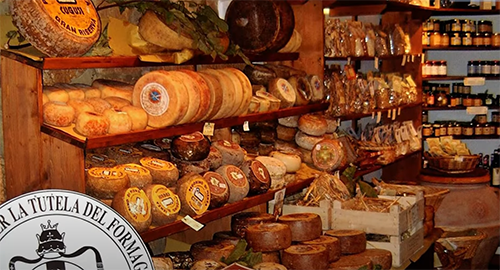

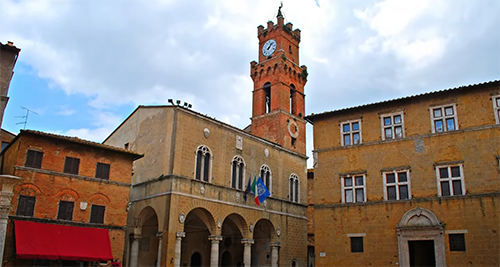

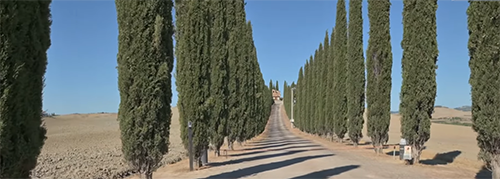

Day 6: Cortona - Under the Tuscan Sun
We awoke to the gentle sounds of the countryside - birds chirping and a light breeze rustling through the olive groves. After a breakfast of fresh eggs from the farm's chickens, homemade bread, and preserves, we bid farewell to our gracious hosts at the agriturismo and set off for Cortona.
The drive to Cortona was a visual feast. We wound our way through the heart of Tuscany, passing vineyards heavy with ripening grapes and fields of sunflowers turning their faces to the morning sun. As we approached Cortona, we could see why Frances Mayes had fallen in love with this place. The town sat proudly on a hillside, its medieval walls and Renaissance buildings glowing warmly in the morning light.
We'd found a charming bed and breakfast just outside Cortona through Expedia, allowing us to enjoy luxury accommodations while still adhering to our budget-friendly travel to Tuscany plan. After checking in and freshening up, we made our way into town, eager to explore.
Our first stop was the Etruscan Academy Museum, housed in a beautiful 13th-century palazzo. As we wandered through the exhibits, we were transported back in time, learning about the mysterious Etruscan civilization that flourished in this area long before the Romans. The collection of Etruscan artifacts was impressive, from delicate jewelry to elaborately painted sarcophagi. We were particularly fascinated by the bronze chandelier known as the "Lamp of Cortona," its intricate designs telling stories of Etruscan myths and daily life.
Leaving the museum, we strolled through Cortona's narrow medieval streets, admiring the well-preserved architecture. Every turn seemed to reveal a new picturesque vista or hidden piazza. We climbed to the highest point of the town, where the fortress of Girifalco offered breathtaking panoramic views of the Val di Chiana below. The patchwork of fields, vineyards, and olive groves stretched out before us, dotted with cypress trees and terracotta-roofed farmhouses. It was easy to see why this landscape had inspired so many artists and writers over the centuries.
As lunchtime approached, we found ourselves drawn to a small enoteca tucked away on a quiet side street. The owner, Alessandra, greeted us warmly and suggested we try a tasting board of local specialties. We happily agreed and soon found ourselves savoring an array of Tuscan delicacies: crostini topped with chicken liver pâté, a local favorite; paper-thin slices of fennel-scented finocchiona salami; aged pecorino drizzled with chestnut honey; and bruschetta topped with fresh tomatoes and fragrant basil.
To accompany our meal, Alessandra recommended a glass of Vino Nobile di Montepulciano. The wine was excellent, its rich cherry and plum notes perfectly complementing the savory flavors of our lunch. As we ate, Alessandra regaled us with stories of Cortona's history and culinary traditions, adding depth to our understanding of the town and its culture.
After lunch, we decided to follow in Frances Mayes' footsteps and seek out some of the locations mentioned in "Under the Tuscan Sun." We found ourselves on Via Ghini, admiring the beautiful old houses and imagining which one might have been Bramasole, Mayes' beloved renovation project. The golden afternoon light cast a magical glow over the weathered stone facades, making it easy to understand why she had fallen so deeply in love with this place.
As the afternoon waned, we made our way to a local farmhouse where we had arranged to take a cooking class. Our instructor, Sofia, welcomed us into her rustic kitchen with its huge fireplace and well-worn wooden table. The class began with a trip to Sofia's vegetable garden, where we picked fresh ingredients for our meal. The fragrance of sun-warmed tomatoes and basil filled the air as we gathered our bounty.
Back in the kitchen, Sofia guided us through the preparation of several traditional Tuscan dishes. We started by making ribollita, a hearty vegetable and bread soup that's a staple of Tuscan cuisine. Sofia showed us how to layer the flavors, starting with a soffritto of onions, carrots, and celery, then adding cannellini beans, cavolo nero (Tuscan kale), and day-old bread. The soup simmered slowly, filling the kitchen with its comforting aroma.
Next, we learned to make pici pasta from scratch, kneading and rolling the dough by hand just as Tuscan cooks have done for generations. Sofia taught us to shape the pici into long, thick strands, which we would later serve with a rich wild boar ragù that had been simmering all day.
For our main course, we prepared peposo, a peppery beef stew that originated among the tile makers of Impruneta. Sofia explained how the dish was traditionally cooked in the same kilns used to fire terracotta tiles, the meat slowly braising in wine and liberally seasoned with black pepper.
As our dishes cooked, Sofia taught us to make cantucci, the classic Tuscan almond biscuits. We shaped the dough into logs, baked them, and then sliced them while still warm, creating the characteristic twice-baked texture.
Finally, it was time to enjoy the fruits of our labor. We gathered around Sofia's long farmhouse table, set on a terrace overlooking the Val di Chiana. The sun was setting, painting the sky in hues of pink and gold. We started with the ribollita, its flavors deep and satisfying. The pici with wild boar ragù was a revelation, the pasta's chewy texture perfectly capturing the rich sauce. The peposo was fork-tender and intensely flavorful, the black pepper providing a warming heat.
We ended our meal with the cantucci, dipping them in Vin Santo as Sofia had taught us. The sweet wine complemented the crunchy, nutty biscuits perfectly. As we sipped our digestivi and watched the stars come out over the Tuscan countryside, we felt a deep connection to this land and its culinary traditions.
Returning to our B&B, we were grateful for the budget-friendly options we'd found through Expedia that had allowed us to splurge on experiences like this cooking class. We fell asleep to the sound of crickets, our dreams filled with the flavors and aromas of Tuscany.
This day in Cortona had brought the pages of "Under the Tuscan Sun" to life for us, allowing us to create our own unforgettable memories in this enchanting corner of Italy. We drifted off, already looking forward to what the next day would bring on our Tuscan adventure.


Day 7: Tuscan Coast - Seafood and Sunsets
We woke early, excited for the final day of our Tuscan adventure. After a quick breakfast of fresh pastries and strong Italian coffee at our Cortona B&B, we set off for the Tuscan coast. Thanks to the great deal we'd found on our rental car through Expedia, we were able to easily make this coastal detour without breaking our budget.
As we drove westward, we watched the landscape transform. The rolling hills and cypress-lined roads of inland Tuscany gradually gave way to pine forests and glimpses of the sparkling Tyrrhenian Sea. Our destination was the charming coastal town of Castiglione della Pescaia, known for its beautiful beaches and well-preserved medieval center.
We arrived mid-morning and began our exploration with a visit to the town's medieval fortress. The climb to the top was steep but rewarding, offering panoramic views of the coastline and the Tuscan Archipelago in the distance. The fortress, with its thick stone walls and watchtowers, spoke of a time when pirates roamed these waters. We imagined the centuries of history these walls had witnessed, from medieval battles to the quiet beauty of countless sunsets over the sea.
Descending from the fortress, we wandered through the picturesque old town. The narrow, winding streets were lined with colorful houses, their shutters thrown open to catch the sea breeze. Flower boxes bursting with geraniums added splashes of color to the weathered stone facades. We browsed small boutiques selling local crafts and gourmet products, picking up a jar of local pine nut honey as a souvenir.
As lunchtime approached, the aroma of grilled fish led us to a small restaurant right on the beach. We chose a table on the sand, our feet sinking into the warm grains as we perused the menu. The owner, Marco, proudly told us that all their seafood was caught fresh that morning by local fishermen.
We started with a platter of crudo - raw seafood dressed simply with olive oil and lemon. The selection included tender octopus carpaccio, sweet red shrimp, and delicate sea bass, each bite a pure taste of the sea. For our main course, we couldn't resist the mixed seafood grill. Marco brought out a feast of grilled octopus, succulent prawns, tender sea bass, and small, flavorful fish called triglie (red mullet). The seafood was seasoned simply with olive oil, lemon, and herbs, allowing the fresh flavors to shine through.
To accompany our meal, we chose a chilled bottle of Vermentino di Toscana. The wine's crisp acidity and notes of citrus and Mediterranean herbs perfectly complemented the seafood. As we lingered over our lunch, watching the waves gently lapping at the shore, we felt truly relaxed and connected to the rhythms of coastal life.
After lunch, we took a short boat trip along the coast, arranged through a local tour company we'd found on Expedia. Our captain, Giuseppe, was a wealth of knowledge about the area's history and marine life. As we cruised along the rugged coastline, Giuseppe pointed out hidden coves and beaches accessible only by boat. He regaled us with tales of the area's pirate history, pointing out a cave where brigands supposedly hid their treasure.
The highlight of the boat trip was a stop at a secluded cove for a swim. The water was crystal clear and refreshingly cool, a perfect antidote to the warm Tuscan sun. As we floated in the turquoise waters, gazing up at the pine-covered cliffs, we felt a sense of peace and connection to nature that was the perfect culmination of our Tuscan journey.
Returning to Castiglione della Pescaia in the late afternoon, we checked into our beachfront hotel. We'd managed to find a great deal on a luxury room through Expedia, allowing us to splurge on our final night in Tuscany while still keeping within our budget for cheap travel to Tuscany. From our balcony, we had a perfect view of the sun beginning to sink towards the horizon, turning the sky into a canvas of orange and pink.
For our final dinner in Tuscany, we had reservations at a Michelin-starred restaurant overlooking the sea. The restaurant, with its elegant decor and panoramic windows, offered a sophisticated take on Tuscan coastal cuisine. We opted for the tasting menu, eager to experience the chef's creative interpretations of local flavors.
The meal began with an amuse-bouche of sea urchin served in its shell with a foam of Tuscan olive oil - a perfect balance of brininess and richness. Next came a delicate crudo of local fish, each type treated differently: sea bream with citrus, amberjack with fresh herbs, and tuna with a hint of aged balsamic.
The pasta course was a revelation: squid ink spaghetti with red prawns and bottarga. The pasta was perfectly al dente, its inky blackness a striking contrast to the bright red of the prawns. The bottarga (cured fish roe) added a satisfying umami depth to the dish.
For our main course, we were served a modern interpretation of cacciucco, the traditional Tuscan seafood stew. The chef had deconstructed the dish, presenting each type of seafood cooked to perfection and arranged artfully on the plate, with the rich tomato-based broth served alongside in a small copper pot.
The dessert was a playful take on the Tuscan coast: a "beach" of crushed amaretti cookies, with chocolate "rocks," pistachio "moss," and a scoop of refreshing lemon sorbet representing the sea foam.
Each course was paired with a carefully chosen wine, primarily from small, boutique Tuscan wineries. The sommelier guided us through each pairing, enhancing our appreciation of both the food and the wines.
As we finished our meal, we stepped out onto the restaurant's terrace to watch the final moments of the sunset. The sky was ablaze with color, the sun a glowing orange orb sinking into the sea. It was a fittingly spectacular end to our Tuscan adventure.
Reflecting on our journey as we walked back to our hotel along the moonlit beach, we were amazed at how much we'd experienced in just seven days. From the art-filled streets of Florence to the rolling hills of Chianti, the medieval charm of Siena to the coastal beauty of Castiglione della Pescaia, we'd fallen in love with every corner of Tuscany.
What made the trip even more special was how we'd managed to experience so much while still keeping to our budget. By using Expedia to find cheap flights to Tuscany, budget-friendly accommodations, and great deals on experiences, we were able to splurge on unforgettable dining experiences and activities.
As we packed our bags, already planning our return trip, we knew that the flavors, sights, and experiences of Tuscany would stay with us forever. This romantic culinary escape had not only tantalized our taste buds but had also nourished our souls, leaving us with a deep appreciation for the rich culinary heritage and stunning beauty of this incredible region.
We fell asleep to the gentle sound of waves, our dreams filled with sun-drenched vineyards, medieval towers, and the endless blue of the Tuscan sea, grateful for the memories we'd created and eager for our next Italian adventure.
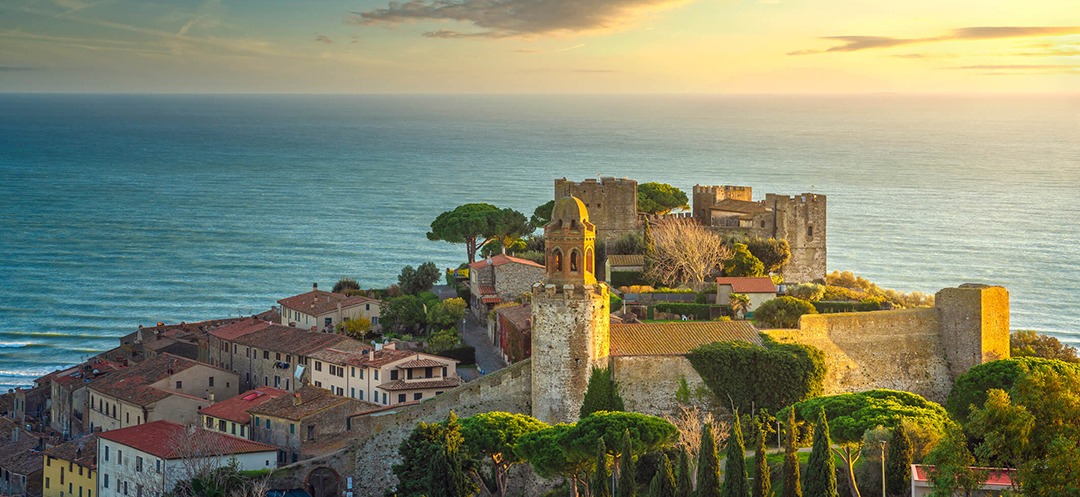

As we boarded our flight back to Copenhagen, the taste of our last Italian espresso still lingered on our lips. Thanks to Expedia, we'd managed to find cheap flights to Tuscany and back, allowing us to splurge on experiences rather than transportation.
Settling into our seats, we couldn't help but reflect on the incredible week we'd just experienced. My wife pulled out a small package from her carry-on - a selection of Tuscan treats we'd purchased as souvenirs. The familiar aroma of fennel salami and aged pecorino filled our nostrils, instantly transporting us back to the sun-drenched hills and medieval towns we'd explored.
As the plane took off, we watched the Tuscan landscape shrink beneath us. The patchwork of vineyards, olive groves, and terracotta-roofed villages gradually faded into a tapestry of memories. We'd discovered that budget-friendly travel to Tuscany didn't mean compromising on experiences. From cooking classes in Cortona to wine tastings in Chianti, we'd immersed ourselves in the region's rich culinary heritage without breaking the bank.
During the flight, we scrolled through our photos, each image sparking a flood of sensory memories. The crisp bite of the Florentine lampredotto, the velvety smoothness of Siena's pici cacio e pepe, the bold flavors of the bistecca alla Fiorentina - each dish told a story of tradition, passion, and the incredible bounty of Tuscan cuisine.
As we neared Copenhagen, the anticipation of returning home was bittersweet. We were leaving behind the warmth of the Tuscan sun and the intoxicating aromas of Italian kitchens, but we were bringing back so much more than just souvenirs. We carried with us new cooking skills, a deeper appreciation for slow food and local ingredients, and countless memories of romantic dinners and breathtaking views.
Landing in Copenhagen, the cooler air reminded us that our Tuscan adventure had come to an end. But as we made our way home, our conversations were already filled with plans for our next visit. We knew that Tuscany had stolen a piece of our hearts, and we were already dreaming of our return.
Our culinary escape to Tuscany had been everything we'd hoped for and more. It had shown us that with careful planning and resources like Expedia, luxurious experiences and budget-friendly travel could go hand in hand. We'd discovered that the true luxury of Tuscany lies not in extravagant hotels or Michelin-starred restaurants (though those were wonderful too), but in the simple pleasures of fresh, local ingredients, breathtaking landscapes, and the warm hospitality of the Tuscan people.
As we unlocked our front door, the familiar scent of home greeted us. But now, mingled with it was a hint of something new - the essence of Tuscany that we'd brought back with us. We knew that our kitchen would soon be filled with attempts to recreate the dishes we'd loved, our walls adorned with photos of rolling hills and medieval towns, and our hearts forever touched by the magic of our Tuscan adventure.
Our romantic culinary escape might have ended, but the flavors, the memories, and the inspiration would stay with us forever. And whenever we open a bottle of Chianti or drizzle some Tuscan olive oil over our food, we'll be transported back to those sun-soaked days under the Tuscan sun.


Welcome to my Designs
Welcome to a world of creative expression! Based in the heart of Copenhagen but reaching customers worldwide, I bring over 500 unique designs to life on t-shirts, hoodies, mugs, and more. Passionate about graphic design, I combine Nordic inspiration with global appeal to offer stylish, high-quality merchandise through Shopify/Printify and Teepublic. Whether you’re looking for a cozy sweatshirt or a personalized candle, each product is crafted to make everyday moments extraordinary.
Explore, express, and enjoy!
Welcome to my world of creative expression! Based in the heart of Copenhagen but reaching customers worldwide, I bring over 500 unique designs to life on t-shirts, hoodies, mugs, and more. Passionate about graphic design, I combine Nordic inspiration with global appeal to offer stylish, high-quality merchandise through Shopify/Printify and Teepublic. Whether you’re looking for a cozy sweatshirt or a personalized Coffee Mug, each product is crafted to make everyday moments extraordinary.
Explore, express, and enjoy!
Advertisment for our Merchndise Shop














